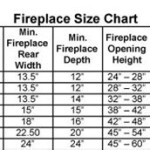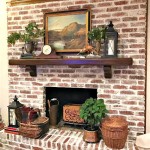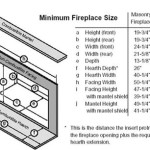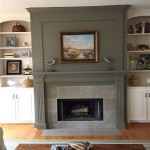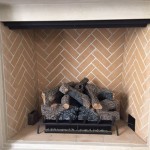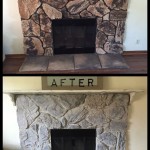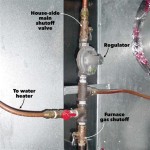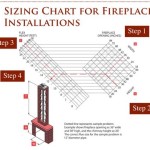Fireplace Screen Replacement: A Comprehensive Guide
Fireplace screens serve a critical function, providing safety and aesthetic appeal to a hearth. Over time, however, fireplace screens can become damaged due to regular exposure to heat, impact, or general wear and tear. When the screen's integrity is compromised, replacement becomes essential. This article provides a comprehensive guide to fireplace screen replacement, covering various types, assessment methods, and the replacement process itself.
Understanding Fireplace Screen Types
Before initiating a replacement, understanding the diverse range of available fireplace screen types is paramount. These include:
Single Panel Screens: These are the most basic and often most economical option. They consist of a single mesh panel framed in metal. Single panel screens are generally used for smaller fireplaces and are relatively lightweight.
Tri-Fold Screens: Offering greater stability and coverage, tri-fold screens consist of three hinged panels. The side panels can be adjusted to better fit the fireplace opening, and they provide a more substantial barrier against sparks and embers.
Bi-Fold Screens: Similar to tri-fold screens but with only two panels, these offer a balance between coverage and ease of handling. They are often preferred for fireplaces where space is a consideration.
Sliding Mesh Screens: These screens feature a mesh panel that slides horizontally along a track. They allow for easy access to the fire without requiring the entire screen to be moved. Sliding mesh screens are often found in more contemporary fireplace designs.
Glass Fireplace Doors: While technically doors, these serve a similar function to screens by containing sparks and embers. Glass doors can be decorative and often improve the efficiency of the fireplace by reducing airflow when closed.
The choice of screen type will depend on the size and style of the fireplace, as well as personal preferences regarding aesthetics and functionality.
Assessing the Need for Fireplace Screen Replacement
A thorough assessment of the existing fireplace screen is crucial to determine if replacement is truly necessary. Several factors can indicate that a screen needs to be replaced:
Visible Damage: Obvious signs of damage, such as holes, tears, or significant rust accumulation on the mesh, compromise the screen's ability to contain sparks and embers. Even small holes can pose a safety hazard.
Frame Deterioration: A warped, bent, or rusted frame compromises the screen's structural integrity. This can make the screen unstable and difficult to position correctly, negating its safety function.
Loose or Broken Hinges: For multi-panel screens, loose or broken hinges render the screen unstable and can prevent it from standing properly. Repairing hinges is sometimes possible, but widespread damage typically necessitates replacement.
Aesthetic Concerns: While functionality is the primary concern, a severely tarnished, discolored, or otherwise unattractive screen can detract from the overall appearance of the fireplace and room. Replacing it can improve the aesthetic appeal.
Safety Concerns: If the screen no longer provides adequate protection against sparks and embers escaping the fireplace, replacement is essential. This is especially important in homes with young children or pets.
Careful inspection, ideally conducted with a flashlight, allows for identification of any structural issues. It is also helpful to take pictures of areas of concern to assist in finding a suitable replacement, particularly if aiming to match an existing style.
The Fireplace Screen Replacement Process
Replacing a fireplace screen is a relatively straightforward process that can often be accomplished by a homeowner. The steps involved are:
1. Measurement: Accurate measurement of the fireplace opening is vital for selecting a correctly sized replacement screen. Measure the width and height of the opening, both at the front and slightly deeper within the firebox, as fireplace openings are often not perfectly rectangular. Account for any inconsistencies. It is better to choose a screen that is slightly larger than smaller; a slightly oversized screen can sometimes be adjusted, but an undersized screen will not offer adequate protection. Note the distance from the fireplace opening to any protruding mantels or other architectural details to ensure the replacement screen will fit without obstruction.
2. Selection: Based on the measurements and desired style, select a suitable replacement screen. Consider the material, frame design, and overall aesthetic to ensure it complements the fireplace and room decor. When selecting a screen, compare similar models across different retailers to ensure a fair price and confirm that the chosen model meets any applicable safety standards. Read customer reviews for insight into the product's durability and ease of use. If replacing a glass fireplace door, confirm the new door is compatible with the existing fireplace insert or firebox.
3. Removal of the Old Screen: Carefully remove the old fireplace screen. If it is a single-panel screen, simply lift it out of place. For multi-panel screens, fold the panels inward to allow for easier removal. Use caution when handling a damaged screen, as sharp edges or broken pieces may pose a risk of injury. If the old screen is heavily rusted or corroded, wear gloves to protect the hands. Consider covering nearby furniture to prevent dust or debris from spreading during the removal process.
4. Cleaning the Fireplace Opening: Before installing the new screen, clean the fireplace opening to remove any accumulated ash, soot, or debris. This will ensure a clean and stable surface for the new screen to sit on and improve the overall appearance of the fireplace. Use a brush and vacuum cleaner or wet/dry vac to remove loose debris. For stubborn stains, consider using a specialized fireplace cleaner. Ensure the area is completely dry before installing the new screen to prevent any potential rust or corrosion.
5. Installation: Carefully position the new fireplace screen in the opening. For single-panel screens, simply center the screen in the opening. For multi-panel screens, adjust the side panels to fit snugly against the sides of the fireplace. Ensure the screen is stable and that all panels are properly aligned. For sliding mesh screens, ensure the track is properly aligned and that the mesh panel slides smoothly. For glass fireplace doors, follow the manufacturer's instructions for installation, which may involve attaching the doors to the existing fireplace insert or firebox. After installation, check the screen is level and stable. If necessary, use shims to correct any imbalances.
6. Testing: After installation, test the screen by building a small fire in the fireplace. Observe the screen to ensure it effectively contains sparks and embers. If any issues arise, such as sparks escaping or the screen becoming unstable, adjust the screen as necessary or consult a professional for assistance. If replacing glass doors, ensure they open and close smoothly and that the latch mechanism functions correctly.
7. Disposal: Dispose of the old fireplace screen responsibly. Metal screens can often be recycled at a local metal recycling facility. Check with the local municipality for disposal guidelines. If the screen is not recyclable, dispose of it according to local regulations for bulky waste.
Safety Precautions and Considerations
Safety should be paramount throughout the entire fireplace screen replacement process:
Wear Protective Gear: Wear gloves to protect hands from sharp edges, rust, and debris. Eye protection is also recommended to prevent dust or particles from entering the eyes.
Work in a Well-Ventilated Area: If using cleaning products, ensure adequate ventilation to avoid inhaling harmful fumes. Open windows and doors to allow for proper airflow.
Handle Materials Carefully: Exercise caution when handling heavy or bulky screens to avoid injury. Use proper lifting techniques and ask for assistance if needed.
Inspect for Damage: Before installing a new screen, inspect it for any damage or defects. Do not install a screen that is damaged, as this could compromise its safety.
Follow Manufacturer's Instructions: Always follow the manufacturer's instructions for installation and use. This will ensure that the screen is installed correctly and functions safely.
Regular Maintenance: After installation, perform regular maintenance to keep the screen in good condition. Clean the screen regularly to remove accumulated soot and ash. Inspect the screen periodically for any signs of damage and repair or replace it as needed.
Ensure Proper Fit: A properly fitted firescreen is crucial for safety. A screen that is too small or has gaps will not adequately protect against escaping sparks and embers. The replacement screen should fit snugly against the fireplace opening to prevent any gaps. For multi-panel screens, ensure the side panels are adjusted to fit the sides of the fireplace snugly.

Matte Black Recessed Fireplace Screen With Valance For Masonry Fireplaces

Fireplace Glass Doors Vs Screens Full Service Chimney

Replacement Fireplace Mesh Curtains Safety Screens

Standard Size Masonry Fireplace Doors Fixed Frame

Glass Fireplace Screen Clearly Innovative

1 4 Standard Mesh With Top Valance Up To 84 Wide Recessed

Pleasant Hearth Waverly 3 Panel Fireplace Screen In Colonial Brown Fa092sa The Home Depot

How To Modernize Fireplace Mesh Screen

Fireplace Glass Doors Vs Screens Full Service Chimney

Pleasant Hearth 54 In Espresso Steel 3 Panel Arched Fireplace Screen The Screens Department At Com

